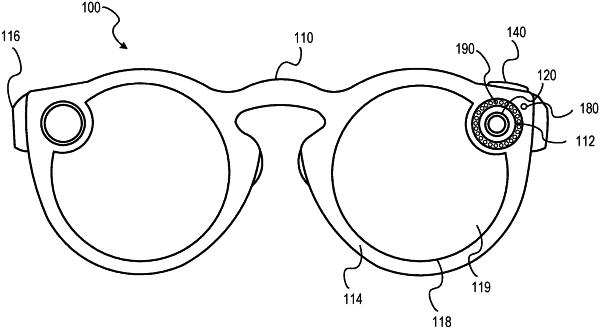| CPC H04N 23/62 (2023.01) [G02B 27/0101 (2013.01); G06F 1/163 (2013.01); G06F 3/16 (2013.01); G06F 21/83 (2013.01); H02J 7/007 (2013.01); H04N 23/51 (2023.01); H04N 23/54 (2023.01); H04N 23/65 (2023.01); G02B 2027/0138 (2013.01); G02C 11/10 (2013.01)] | 17 Claims |

|
1. A method of securing an image capture device, the method comprising:
placing an image capture component in a default capture state, the default capture state being a locked state;
detecting an interaction with a control component, the control component physically selectable or manipulable by a user of the securable image capture device, the control component configured to initiate modification of the default capture state;
triggering a locking component to modify the default capture state from a locked state to an unlocked state;
capturing audio data responsive to a record state triggered by the locking component upon release of the default capture state from the locked state to the unlocked state; and
triggering the locking component to revert the default capture state from the unlocked state to the locked state to prevent capture of audio data after exhaustion of a predetermined period of time, the predetermined period of time initiated in response to the interaction with the control component.
|